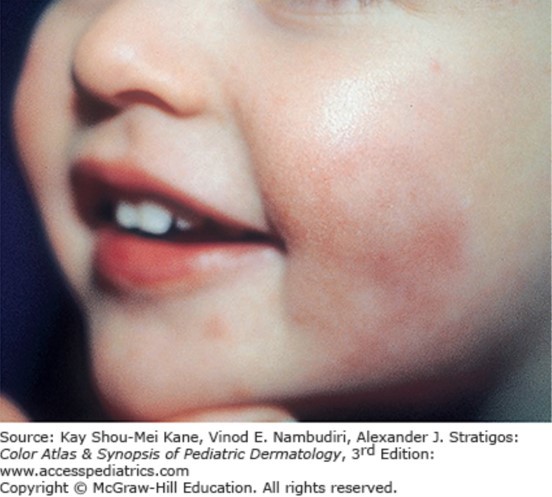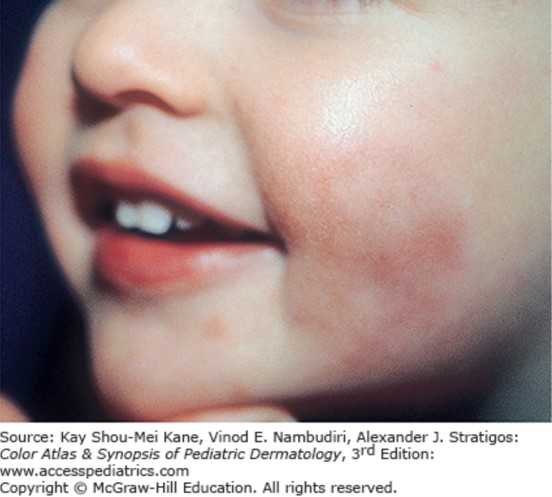Week 25 Q&A

He has been healthy and this is his first illness. He has no known drug allergies. His mother reports that he developed a red raised rash on his cheeks and around his mouth earlier today. The rash does not appear to bother the infant. He is afebrile and otherwise acting normally while eating a popsicle in the room.

Given this presentation, your clinical suspicion is for:
A. Facial cellulitis.
B. Hives.
C. Cold panniculitis.
D. Eczema.
E. Pressure erythema.
The correct answer is “C.” Cold panniculitis is sometimes called “popsicle panniculitis” as it commonly occurs in association with eating frozen treats. The absence of systemic symptoms such as fever combined with a history of cold exposure (ie, eating popsicles) are very suggestive of cold panniculitis. It represents acute cold injury to the subcutaneous fat and the development of erythematous indurated nodules or plaques on the exposed skin. Lesions usually appear 24 to 72 hours after exposure to cold and gradually return to normal in 2 weeks to 3 months, although postinflammatory hyperpigmentation may remain.
Sources:
Question & Explanation: Peterson AR, Wood KE. Pediatrics Examination and Board Review. New York, NY: McGraw-Hill Education; 2017.
Photo: Kane K, Nambudiri VE, Stratigos AJ. Color Atlas & Synopsis of Pediatric Dermatology, 3e; 2016.





Create a Free MyAccess Profile
AccessMedicine Network is the place to keep up on new releases for the Access products, get short form didactic content, read up on practice impacting highlights, and watch video featuring authors of your favorite books in medicine. Create a MyAccess profile and follow our contributors to stay informed via email updates.